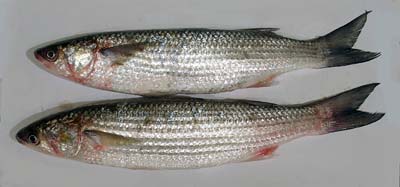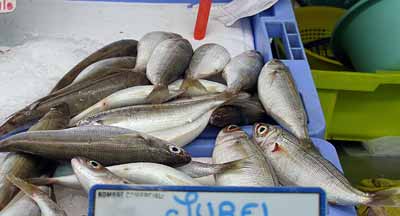
Grey mullet, the commonest and largest of the grey mullet (US: striped mullet) family. It is a silver, shoal-living fish pointed with dark grey which feeds on seaweed and plankton near the muddy bottom in estuaries and coastal waters. This can effect its flavour. However, a good grey mullet, caught in clean water, is round-bodied and has creamy white flesh and good flavour with good keeping capabilities. It must be thoroughly scaled before eating. Varieties are found all over the world. The roe is used for taramasalata, botargo, boutargue.

Boops or bogue, an inferior variety of sea bream. These are brightly coloured, silvery yellow, spindle-shaped fish with large eyes abundant in the Mediterranean about 20-30 cm (8-12 inches) long. They are usually used in fish soups or are served grilled.
Wels or sheetfish. A type of catfish that can grow up to 5 m (16 ft) in the wild and is Europe's largest freshwater. It is found in the Rhine River in Germany eastwards to the Black and Caspian Seas. The elongated wels body consists of a powerful forebody and a laterally greatly compressed tail shaft; the prominent anal fin merges with the caudal fin. This fish, with its calm undulating tail movements normally has its long pair of upper jaw barbels pointing straight forward, while the four smaller barbels of the lower lip hang down. The dorsal fin, consisting of just four rays, seems small for such a powerful animal. In the wild they have been known to eat ducks where they rush up behind them at night, sucking them into their mouths with a vortex motion. In their native habitat they feed on other fishes mainly eels, burbot, tench and roach, but it also takes water voles.